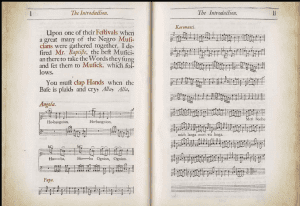What’s different about this musical map from others is the very format of the “map” – not a geographical rendering of the dissemination of Jamaican music in the 17th century, but rather a mapping of sounds onto paper using Western-style notation practices. The sheet music becomes the base map for this site. The organization of this map privileges its auditory component; scan any part of the open, manuscript page and different songs are highlighted, with the option to “Explore” the particular instrumentation of that piece by opening another bubble. Users should also make use of the considerable textual support provided by the “About” and “Read” pages, which explain the researchers’ approach, as well as the context of this isolated musical incident.

You must be logged in to post a comment.